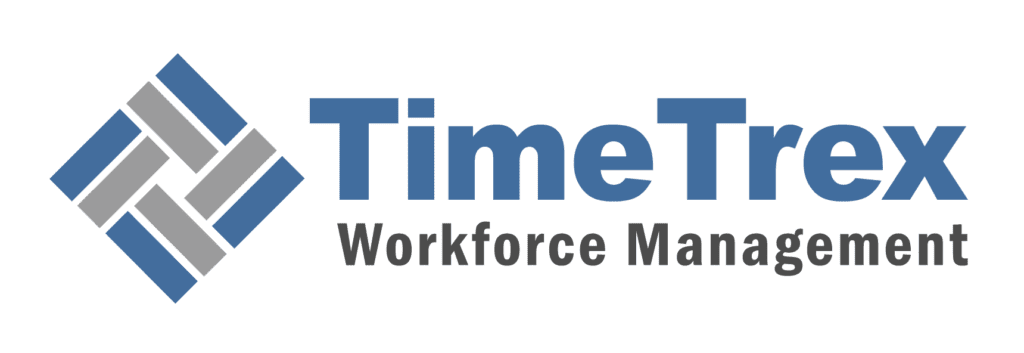
Solving Warehouse Logistics Challenges with WFM
For US businesses, excelling in warehouse logistics is no longer a choice—it's a critical factor for survival and growth. Optimizing warehouse operations means tackling complex workforce management challenges head-on. This article delves into how a strategic approach to workforce management, particularly through solutions like TimeTrex, can transform your warehouse logistics from a major cost center into a powerful competitive advantage. We'll explore key issues like labor costs, productivity gaps, and compliance risks that directly impact your bottom line in warehouse and distribution settings.
Article Contents
TL:DR
The modern warehouse is crippled by labor-related challenges that Warehouse Management Systems (WMS) alone can't solve. Labor costs, consuming up to 65% of operational budgets, are inflated by overtime, time theft, and administrative errors. Productivity suffers from high turnover and inefficient processes, while complex labor laws create significant compliance risks. A dedicated Workforce Management (WFM) solution like TimeTrex directly targets these issues by automating time tracking, scheduling, and payroll. By integrating a WFM with a WMS, businesses can optimize both their inventory (what) and their people (who), turning their largest expense into a strategic, competitive asset.
The Modern Warehouse Operations Landscape: A Matrix of Pressures and Pain Points
The contemporary warehouse is far more than a storage facility; it is a high-velocity distribution hub under constant pressure to increase throughput, reduce costs, and meet ever-shrinking delivery windows. Within this environment, operational managers grapple with a complex matrix of challenges that directly impact profitability and customer satisfaction. While inventory and space utilization are critical, the most significant and often least-managed variable is the workforce. This section dissects the multifaceted challenges confronting warehouse operations, establishing the critical context for strategic intervention.
The Human Capital Challenge: Navigating Labor Costs, Scarcity, and Productivity
The human element is the engine of any warehouse, yet it is also the source of its greatest financial and operational vulnerabilities. Managing this human capital effectively is paramount, but a confluence of internal and external factors makes it an increasingly difficult task.
Deconstructing the 65% Problem: Analyzing Spiraling Labor Costs and Overtime Inflation
The single most dominant line item in a warehouse's operational budget is its labor force. Analysis consistently shows that labor costs can account for up to 65% of total operational spend, making it the most critical area for optimization. These costs are not static; they are actively inflated by a host of inefficiencies. Excessive manual handling and poorly designed processes force employees to expend more time and effort than necessary on each task, directly increasing the labor cost per unit moved. A primary driver of this cost inflation is unplanned overtime. In the absence of sophisticated forecasting and scheduling tools, managers are often forced into a reactive staffing model. When unexpected order spikes occur or absenteeism is higher than anticipated, the default solution is to hold staff over, incurring premium pay rates that rapidly erode profit margins. This reactive approach to overtime is a symptom of a deeper systemic failure in workforce planning and visibility, turning a manageable expense into a significant financial drain.
The High Price of Inaccuracy: Time Theft, "Buddy Punching," and Administrative Overhead
Beyond planned wages and overtime, significant payroll leakage occurs due to inaccuracies in time tracking. A persistent vulnerability in facilities using manual or basic card-based systems is "buddy punching," where one employee clocks in or out for an absent or tardy colleague. This is a direct form of time theft that can accumulate into thousands of dollars in unearned wages annually. Furthermore, the reliance on paper timesheets or disconnected spreadsheets institutionalizes inefficiency and error. Each manual entry is an opportunity for a mistake, and the process of collecting, verifying, correcting, and re-entering this data into a payroll system creates a substantial administrative burden. This overhead is not a value-added activity; it is a pure cost center, consuming hours of managerial and HR time that could be dedicated to more strategic initiatives like training, safety, or process improvement. The cumulative effect is a payroll system that is not only expensive to maintain but also perpetually at risk of costly inaccuracies.
The Talent Deficit: Addressing Labor Shortages, High Employee Turnover, and Skills Gaps
The challenge of managing labor costs is exacerbated by external market pressures, most notably persistent labor shortages. In many regions, it has become exceedingly difficult to hire and retain skilled, reliable warehouse workers. This talent deficit has several cascading consequences. Operations become reliant on inexperienced temporary workers who are often less productive and more prone to errors in critical tasks like picking and packing. This reliance on a transient workforce feeds into another critical issue: high employee turnover. The costs associated with turnover are substantial, encompassing not only recruitment and hiring expenses but also the significant cost of training new employees who may not stay long enough for that investment to yield a return. This creates a self-perpetuating crisis in human capital.
Unlocking Potential: Overcoming Productivity Gaps Caused by Disengagement and Inefficient Processes
Even with a full staff, productivity can be systematically undermined by inefficient operational design. A staggering finding is that in many warehouses, pickers can spend as much as 50% of their time simply traveling between locations rather than actively picking items. This is a direct result of suboptimal warehouse layouts and inefficient pick paths that force workers to cover excessive territory to assemble an order. This wasted travel time not only reduces overall throughput but also leads to employee fatigue, which can further increase error rates and the risk of accidents. This direct linkage between physical process flow and human performance highlights how operational inefficiencies translate directly into squandered labor potential and reduced profitability.
The Compliance and Safety Imperative
Beyond cost and productivity, warehouse operations are governed by a stringent framework of legal and safety regulations. Failure to navigate this framework effectively represents one of the most significant hidden liabilities for any logistics business.
Navigating the Labyrinth of Labor Regulations and Collective Bargaining Agreements
Warehouse operators must adhere to a complex and ever-changing web of labor laws, such as the Fair Labor Standards Act (FLSA), which governs minimum wage, overtime pay, and recordkeeping. These regulations often include specific mandates for meal and rest periods that must be meticulously tracked and enforced. For unionized facilities, these complexities are magnified by the need to adhere to the precise terms of collective bargaining agreements regarding seniority, shift bidding, and pay premiums. Managing this compliance manually is an error-prone and high-risk endeavor. A single miscalculation of overtime or a failure to provide a mandated break can lead to significant financial penalties, back-pay awards, and costly litigation.
The Hidden Financial and Operational Costs of Neglecting Health and Safety Protocols
A safe workplace is not just a moral and legal obligation; it is an operational necessity. Far too many warehouses fail to give health and safety procedures the requisite attention, leading to preventable accidents and injuries. The direct costs of such incidents are clear—workers' compensation claims and potential regulatory fines. However, the indirect costs are often even greater. An accident can halt production in an entire section of the warehouse, causing significant disruptions to productivity and order fulfillment. Proactive safety management, which includes providing proper personal protective equipment (PPE), conducting regular training, and diligently tracking incidents and near-misses, is essential for mitigating these financial and operational risks.
The Data Disconnect: The Consequences of Operational Blind Spots
Many of the challenges detailed above are either caused or exacerbated by a fundamental lack of accurate, timely, and actionable data. Operations are forced to navigate a high-stakes environment with insufficient visibility into their most critical asset.
The Inherent Flaws of Manual Processes and Legacy Systems
A persistent belief that sticking with antiquated, paper-based processes saves money is a strategic fallacy. In reality, these systems institutionalize inefficiency and risk. Every piece of paperwork increases the chance of human error, slows down individual tasks, and creates data silos where critical information is inaccessible for real-time decision-making. The problem is not merely an absence of data, but a critical lack of the right data—specifically, granular, real-time analytics on workforce attendance, productivity, and cost. This explains why a warehouse can be advanced in material handling technology yet primitive in its approach to workforce management.
Forecasting Failures: The Ripple Effect of Misaligned Staffing and Seasonal Demand
The consequences of poor data are most acute in planning and forecasting. Warehouse operations frequently face wide forecast ranges for order volumes, sometimes varying from 80% to 120% of the projection, which creates chaos in labor planning. Without accurate historical data on labor productivity and attendance patterns, managers cannot effectively align staffing levels with anticipated demand. This is especially problematic when dealing with seasonal fluctuations. The inability to scale the workforce up or down efficiently leads to either overstaffing and excessive labor costs during slow periods, or understaffing, backorders, overwhelmed employees, and severe customer dissatisfaction during peak seasons.
| Pain Point Category | Specific Manifestation | Primary Financial Impact | Secondary Operational Impact |
|---|---|---|---|
| Labor Costs & Control | Payroll inflation from overtime and errors | Increased Operating Expenses (OpEx), Reduced Profit Margins | Decreased Labor Productivity, Employee Burnout |
| Labor Costs & Control | Time theft via "buddy punching" | Direct Payroll Leakage, Inflated Labor Costs | Inaccurate Labor Data, Erosion of Accountability |
| Labor Costs & Control | High administrative overhead for payroll | Increased G&A Expenses, Wasted Managerial Time | Delayed Payroll Processing, Focus on Admin over Operations |
| Productivity & Efficiency | High employee turnover and skills gaps | Increased Recruitment & Training Costs | Decreased Throughput, Higher Error Rates |
| Productivity & Efficiency | Inefficient pick paths and wasted travel time | Lower Labor Utilization, Reduced Units Per Hour | Slower Order Fulfillment Times, Employee Fatigue |
| Compliance & Safety | OSHA/Labor law violations | Fines, Penalties, Litigation Costs | Risk of Work Stoppage, Damage to Public Image |
| Compliance & Safety | Workplace accidents and injuries | Increased Insurance Premiums, Workers' Comp Claims | Lost Productivity, Decreased Employee Morale |
| Data & Visibility | Inability to forecast labor for seasonal peaks | Excessive Overtime Costs, Lost Revenue from Stockouts | Inability to Scale, Overwhelmed Staff, Service Failures |
| Data & Visibility | Reliance on manual, paper-based systems | High Cost of Errors, Administrative Burden | Data Silos, Slow Decision-Making, Lack of Analytics |
TimeTrex as a Strategic Solution for Warehouse Workforce Optimization
Addressing the complex matrix of challenges requires a solution specifically engineered to manage the human element of warehouse operations. A dedicated Workforce Management (WFM) system like TimeTrex provides a suite of integrated tools designed to impose control, precision, and intelligence upon the historically volatile domain of labor management. The following table provides a high-level summary of this problem-solution mapping.
| Warehouse Pain Point | Root Cause | TimeTrex Feature/Module | Strategic Outcome |
|---|---|---|---|
| Time theft via "buddy punching" | Lack of verifiable punch-in/out methods | Biometric Facial Recognition Time Clocks | Elimination of payroll leakage, guaranteed payroll accuracy. |
| Spiraling overtime costs | Reactive management of overtime hours | Proactive Overtime Management with Custom Alerts | Shift from reactive cost overruns to proactive cost control. |
| High administrative overhead | Manual timesheet collection and data entry | Automated Time & Attendance with Payroll Integration | Drastic reduction in administrative workload and associated costs. |
| Inefficient scheduling for demand | Lack of tools for complex, rotating shifts | Advanced Employee Scheduling Module | Optimized staffing levels, reduced under/overstaffing, improved coverage. |
| Risk of labor law violations | Manual, inconsistent application of complex rules | Automated, Rule-Based Compliance Engine | Fortified compliance, reduced legal risk. |
| Lapsed safety certifications | Decentralized and manual tracking | HR Module with Certification Tracking & Alerts | Proactive safety management, ensured workforce qualification. |
Gaining Granular Control Over Labor Expenditure
The most immediate and quantifiable impact of implementing a WFM system is in staunching the financial bleeding associated with labor costs. TimeTrex provides a multi-pronged approach to achieving payroll precision and transforming labor from an unpredictable expense into a tightly managed cost.
Achieving Payroll Precision: Eliminating Leakage with Biometric, Geofenced, and Automated Time Tracking
To directly combat time theft, TimeTrex offers Biometric Facial Recognition time clocks. This technology provides an irrefutable method of verification, ensuring that the person clocking in is the employee themselves, thereby completely eliminating the possibility of "buddy punching". To address off-site punching, the platform incorporates Geolocation and Geofencing, ensuring paid time begins only when an employee is physically present. Fundamentally, TimeTrex automates the entire time capture process, replacing error-prone manual timesheets with a digital system that flows seamlessly into the payroll module, guaranteeing precision every time.
Strategic Overtime Management: Shifting from Reactive Costs to Proactive Control with Real-Time Alerts
Rather than discovering excessive overtime costs during payroll processing, TimeTrex allows for proactive, real-time management. The system can be configured with customizable alerts that automatically notify a supervisor when an employee is approaching their overtime threshold. This provides the manager with a critical window of opportunity to make a strategic decision before the premium pay is incurred. This shift from a reactive to a proactive stance is a cornerstone of effective labor cost management.
Enhancing Workforce Productivity and Engagement
Beyond cost control, a WFM system is a powerful tool for optimizing the deployment and effectiveness of the workforce. By providing better tools for planning and empowering employees, TimeTrex helps transform the workforce into a more productive and engaged unit.
Data-Driven Scheduling: Optimizing Staffing for Operational Demands
To combat the challenges of forecasting and seasonal demand, TimeTrex provides a robust employee scheduling module. Managers can move beyond spreadsheets to create complex, multi-week rotating schedules that align staffing levels and skill sets with anticipated operational needs. By integrating with attendance data, the system provides a live supervisor dashboard with an at-a-glance view of the entire facility, instantly identifying late arrivals or no-shows and allowing for immediate staff reallocation to prevent production delays.
From Hours Worked to Value Created: Applying Job Costing and Performance Analytics
To provide deeper business intelligence, TimeTrex includes a Job Costing feature that allows employee time to be allocated against specific projects, departments, or work orders. This transforms time tracking from a simple payroll input into a strategic analytical tool. Managers can use this granular data to understand the true labor cost associated with fulfilling a particular client's orders, allowing them to identify unprofitable activities and make data-driven decisions about where to allocate resources for maximum return.
Fortifying Compliance and Cultivating a Culture of Safety
In a highly regulated industry, compliance cannot be left to chance. TimeTrex provides an automated framework for enforcing rules and managing safety protocols, drastically reducing organizational risk.
An Automated Compliance Engine: Ensuring Adherence to Labor Laws and Union Policies
TimeTrex's platform is built on an extremely flexible, rule-based engine. This allows an organization to codify its specific compliance requirements—from federal and state labor laws to company-specific policies and complex union rules—directly into the system. The software can then automatically enforce these rules, for example, by preventing employees from clocking out before a mandated meal break is taken or by correctly applying complex pay premiums. This function acts as a "great equalizer," removing the variability and risk associated with individual manager discretion and ensuring every employee is managed under the same compliant framework.
Creating Immutable Audit Trails for Unquestionable Regulatory Scrutiny
In the event of a wage and hour dispute or a regulatory audit, the burden of proof lies with the employer. TimeTrex provides a powerful defense by creating a detailed and immutable digital audit trail for every workforce-related action. Every punch, edit, request, and approval is electronically logged with a user ID and timestamp. This provides an unassailable, easily searchable record that can be used to definitively demonstrate compliance and defend the organization's actions against legal or regulatory challenges.
Strategic Implementation and Ecosystem Synergy
The full value of a Workforce Management system is realized when it is integrated as a core component of a holistic warehouse technology strategy. Implementing TimeTrex effectively requires an understanding of its synergistic relationship with other key systems and a thoughtful approach to adoption and data utilization.
The WMS and WFM Symbiosis: A Dual-System Approach to Operational Excellence
A Warehouse Management System (WMS) is the system of record for physical assets; it manages the "what" and "where" of warehouse operations. In contrast, a WFM system like TimeTrex is the system of record for people and time; it manages the "who" and "when". Peak operational excellence is achieved by creating a symbiotic relationship between them. A WMS can calculate the most efficient pick path, but it has no visibility into which employee is available or approaching overtime. A WFM provides this critical human context. When these systems are integrated, a truly optimized workflow becomes possible, allowing an organization to optimize both its physical and human assets in concert.
Leveraging Workforce Analytics for Continuous Operational Improvement
The long-term strategic value of TimeTrex lies in the data it generates. The platform is a rich source of business intelligence that can fuel ongoing optimization. By analyzing attendance data, managers can identify departments with high absenteeism to investigate root causes like burnout. They can use job costing data to correlate labor costs with specific clients or products, revealing which activities are most profitable. This analytical capability provides the foundation for a continuous improvement loop where data informs decisions, changes are implemented, and the results are measured back through the system.
Optimize Your Warehouse Operations Today
Ready to transform your warehouse logistics from a cost center into a competitive powerhouse? Discover how TimeTrex's specialized workforce management solutions for the warehousing and storage industry can help you control labor costs, boost productivity, and ensure compliance.
Learn More About TimeTrex for WarehousingConclusion: Transforming the Warehouse Workforce from a Liability to a Strategic Asset
In the fiercely competitive modern logistics landscape, the new competitive frontier lies in the strategic management of human capital. The pervasive challenges of inflated labor costs, chronic productivity gaps, and significant compliance risks are symptoms of outdated workforce management. The implementation of a dedicated Workforce Management solution like TimeTrex offers a direct and comprehensive remedy. By introducing precision to time tracking, intelligence to scheduling, and automation to compliance and payroll, it allows organizations to gain definitive control over their largest operational expense. Ultimately, by embracing a synergistic technology strategy where a WMS manages assets and a WFM manages people, logistics organizations can unlock the analytical insights required to turn their labor force from an unpredictable liability into a reliable, efficient, and powerful strategic asset.
Disclaimer: The content provided on this webpage is for informational purposes only and is not intended to be a substitute for professional advice. While we strive to ensure the accuracy and timeliness of the information presented here, the details may change over time or vary in different jurisdictions. Therefore, we do not guarantee the completeness, reliability, or absolute accuracy of this information. The information on this page should not be used as a basis for making legal, financial, or any other key decisions. We strongly advise consulting with a qualified professional or expert in the relevant field for specific advice, guidance, or services. By using this webpage, you acknowledge that the information is offered “as is” and that we are not liable for any errors, omissions, or inaccuracies in the content, nor for any actions taken based on the information provided. We shall not be held liable for any direct, indirect, incidental, consequential, or punitive damages arising out of your access to, use of, or reliance on any content on this page.
About The Author

Roger Wood
With a Baccalaureate of Science and advanced studies in business, Roger has successfully managed businesses across five continents. His extensive global experience and strategic insights contribute significantly to the success of TimeTrex. His expertise and dedication ensure we deliver top-notch solutions to our clients around the world.
Time To Clock-In
Start your 30-day free trial!
Experience the Ultimate Workforce Solution and Revolutionize Your Business Today
- Eliminate Errors
- Simple & Easy To Use
- Real-time Reporting

Saving businesses time and money through better workforce management since 2003.
Copyright © 2025 TimeTrex. All Rights Reserved.
